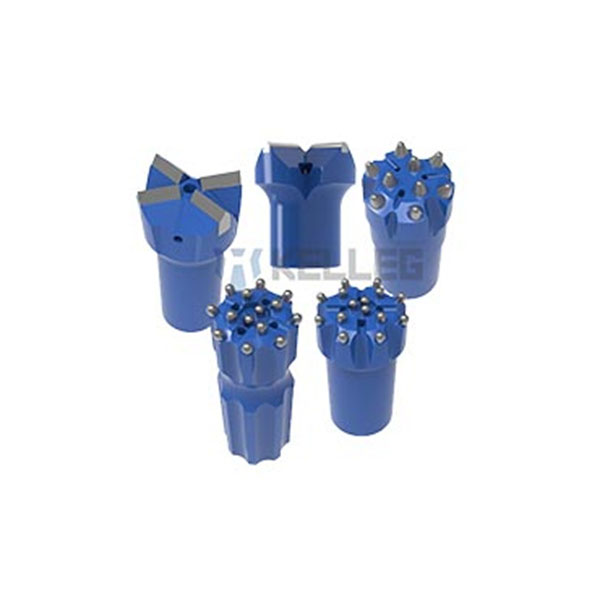2020 官网升级中!现在您访问官网的浏览器设备分辨率宽度低于1280px请使用高分辨率宽度访问。
As a kind of rock drilling tools, the rock drill bit contacts and breaks rock during drilling to achieve the purpose of drilling rock holes. Therefore, under severe wear and corrosive media conditions, the rock drill bit should bear the cyclic stress in tension, compression, bending and torsion exerted by the high frequency and high impact rock drill. According to load and rock sturdiness, service life of drill bit is often only a few minutes to a few hours. Such harsh working conditions and short service life are rare in all machine tools, so the choice of steel for rock drill bits is based on its use characteristics.

Steel selection principles for rock drill bits
1. Toughness and wear-resistant
It should have good rigidity and toughness.
①Wear-resistant. Under the reasonable conditions of fixed chip and button, the hardness of the drill bit head should reach HRC35~50 to guarantee good rigidity, wear resistance, and clamping ability of alloy buttons.
②Impact resistance. It has a high yield limit, fatigue strength, impact toughness, and fracture toughness, which can effectively prevent the deformation and brittle fracture of the drill bit shell, which can greatly ensure the stability of the drill bit geometry and the durability of the work.
2. Good manufacturability.
It should have good processing performance.
①Easy cutting. The hardness after annealing is not greater than HB260, but it should not be too soft, so as not to stick to the knife and affect its processing quality.
②Good hardenability and hardenability. Appropriately control the heating temperature and brazing process. Air cooling hardness should reach HRC35~50.
③Good weldability. It has a strong affinity for general copper-based or silver-based solders, the interface of the welded shell can form a solid solution, and the linear expansion coefficient and hardness alloy are relatively close to reducing welding stress.
3. In line with local resources
Because of the harsh stress conditions of the drill bit, Ni, Cr-Mo ultra-high-strength alloy steels are used for the more popular brand drill bit in the world. Ni and Cr resources are different in different regions. Therefore, in the necessary drilling conditions, alloy steels such as Ni, Cr, and Mo should be used. In general, Si, Mn, Mo steel series or other alloy steels with low Ni, Cr, and Mo steel series can be appropriately selected according to the actual situation.
4. Recommended steel for rock drill bit shell
The service conditions of the rock drill bit are similar to those of the drill rod, which are resistant to wear and have a high impact bearing capacity under fatigue load and corrosion conditions. The fracture shape of the drill rod and the rock drill bit is slightly different. The drill rod is mainly fractured by stress corrosion fatigue, while the rock drill bit shell is worn and deformed, losing the ability to fix buttons, plastic deformation, shell plastic deformation, and fatigue or brittle fracture.
Therefore, the requirements for the hardness and cyclic toughness of the drill bit shell should be higher than that of the drill rod. For commonly used induction brazing drill bit with a fixed button, the drill bit shell is recommended to use 40MnMoV, 24SiMnNi2CrMo, 25SiMnNiCrMoV, and 30CrNi4Mo steel grades. According to tape of rock and rock drilling, some 35SiMnMoV, 40SiMnCrMoV, and other medium carbon bainite alloy steels with good air cooling hardening ability can also be used. For button bits for the hot-clamping button, it is recommended to use Q45NiCrMoV and 24SiMnNi2CrMo steel grades.
To sum up, the principle of steel for rock drill bits is affected by its basic characteristics, and many manufacturers have been committed to the refinement of materials and processes. However, as long as the working environment of the rock drill bit does not change, its steel principle will not change either. Then manufacturers who follow these principles can naturally produce rock drilling products that meet market demand.